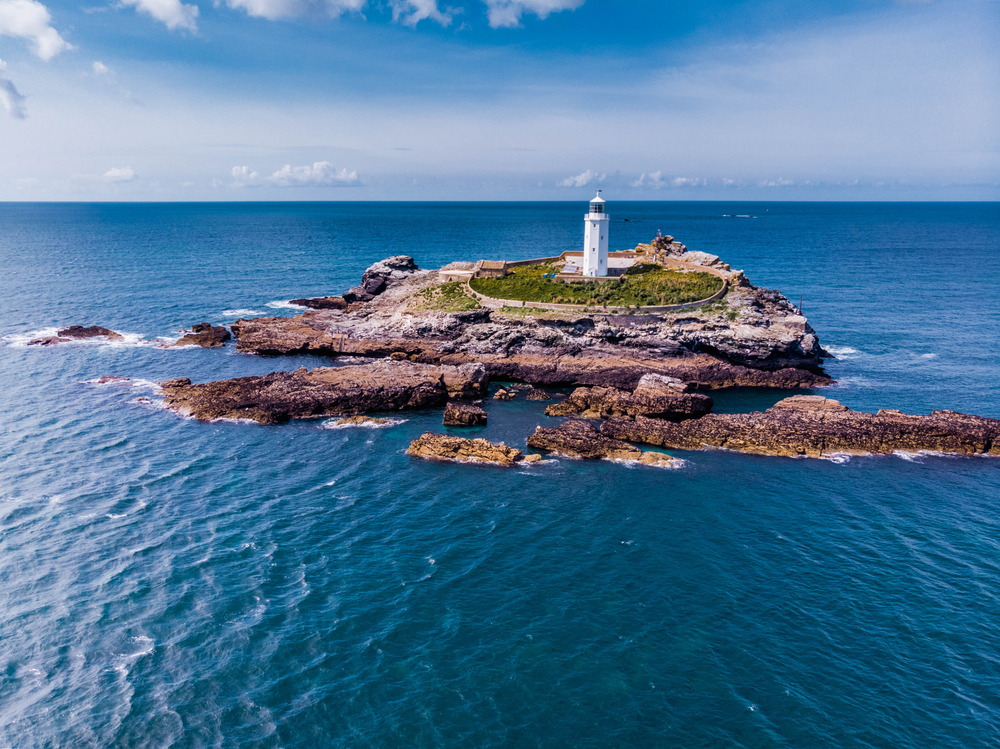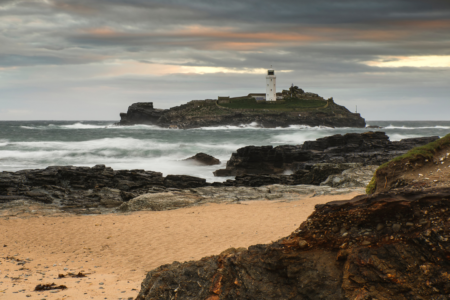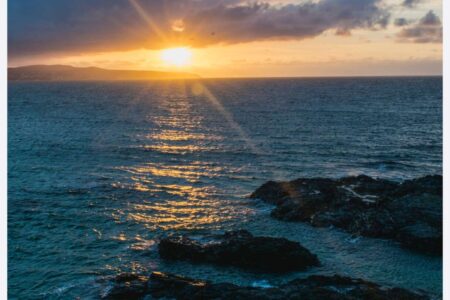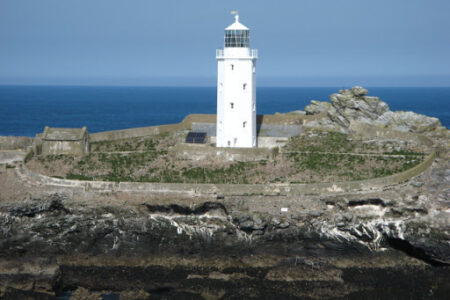The view of the white tower of Godrevy lighthouse on its little rocky island on the eastern edge of St Ives Bay has to be one of the most beautiful and iconic in Cornwall. It marks where the notorious Stones reef lurks beneath the surface and before the lighthouse was built this reef had been a serious menace to shipping on this stretch of coast and had claimed many ships and many sailors’ lives.
At least seventeen wrecks occurred on The Stones within just a matter of a few years in the early 19th century but it was the disastrous wreck of the liner Nile in 1854, with the loss of 35 people and around £50,000 worth of cargo, which finally brought home the need for action. A long campaign by local people eventually resulted in construction of the lighthouse which was started in 1858.
The striking white octagonal tower of Godrevy Lighthouse is 26 metres high and is made from rubble stone bedded in mortar. It was designed by James Walker of Trinity House and constructed by Thomas Eva and Thomas Williams, builders of Helston and was originally manned by three keepers. The first light shone from the lantern on Tuesday 1st March 1859 and from then on wrecks in the area decreased dramatically.
The lighthouse is situated in the centre of what appears from the shore to be a single island but which in reality is split in two by a deep chasm just behind the lighthouse creating two separate islets.
Literary connections
Famously Virginia Woolf spent her childhood summer holidays at St Ives in the late 19th century. The family rented Talland House which overlooked Gwithian Beach and the wide sweep of St Ives Bay. The little white tower of the lighthouse was a constant on the horizon while Virginia played in the garden or swam in the sea, and Woolf wrote years later that that time in Cornwall was deeply imbedded in her memory. It is universally agreed that her famous novel To the Lighthouse was inspired by Godrevy.
The last keepers left Godrevy Lighthouse in August 1934 when it became an automatic light, it was then converted to solar powered operation in 1995. Finally in 2012 the light was moved from the tower to a new steel structure on an adjacent rock. The old lighthouse’s work was done but its elegant, somewhat lonely outline against a blue sky or golden sunset still remains one of the most beautiful views in Cornwall.



